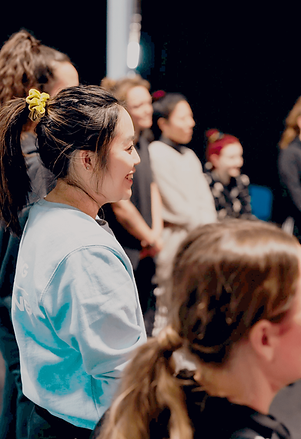The Science of the Flyer's Stretch:Understanding Hip Anatomy for Improving Cheerleader's flexibility
- Bethany Shum
- Oct 21, 2022
- 2 min read
Updated: May 2
Written by Bethany Shum (HPCP, CSP)

In stunting, the flyer performs shapes such as “Bow and Arrow” and “Needle”. These shapes place their hips in an extreme range of motion. To improve cheerleaders' flexibility, it requires the flyer to maintain the balance between hip strength and flexibility can reduce the risk of injuries and pain.
Why do we need to balance flexibility and strength?
Flexibility is the range of motion available at a joint. Some cheerleaders may be strong but not flexible. Whereas some cheerleaders may be flexible but lack active strength.
If you lack strength, this reduces the control of your joints and increases the risk of overstretching and injuries. If you lack flexibility, your body will compensate, creating poor techniques. Both factors can affect cheerleaders’ ability to execute these shapes safely.
How do we train them?
1. Understand the anatomy (muscle and bones) that is involved in a shape.
2. Perform regular static stretches (20-30 seconds hold) for the muscle groups that are tight.
3. Perform active flexibility exercises to strengthen the muscle group that is weak.
For Example:

Performing a “Needle”, requires a balance between the anterior muscle’s flexibility (hip flexors and quadricep) and the posterior muscle’s strength (hip extensors, gluteus maximus and hamstring).
Therefore, your training plan can include stretches to length hip flexors (low lunge) and exercises that strengthen the hip extensors (leg lifts).
Example of a hip flexor stretch:
Example of a hip extensor strengthening exercise:
Conclusion On How To Improving Cheerleader's Flexibility
Cheerleaders are performers that require repetitive training at extreme range of motion. Regular stretching of the tight muscles and strengthening of the weak muscles are both essential aspects to enhance the shape during stunting.
Understanding which factors are influencing flexibility, can guide us towards a more balanced training programme, reduce injuries and progress over time.
References:
Rountee, S., 2012. Balance Flexibility in the Hips. [Blog] Yoga journal, Available at <https://www.yogajournal.com/poses/anatomy/hips/balancing-the-hips/> [Accessed 21 October 2021]. eber, A., Bedi, A., Tibor, L., Zaltz, I. and Larson, C., 2014.
The Hyperflexible Hip: Managing Hip Pain in the Dancer and Gymnast. Sports Health: A Multidisciplinary Approach, 7(4), pp.346-358.
2013. Xtreme Shots Photography. [image] Available at:<https://www.facebook.com/XtremeShotsPhotography/photos/10151347009243441> [Accessed 21 October 2021].
You can get in touch with Beth Shum, the founder of Flexibility Matters Physiotherapy, for physiotherapy services and more information on enhancing flexibility. Visit her website at www.fmphysio.com or connect with her on Instagram @flexibility_matters.

.png)




